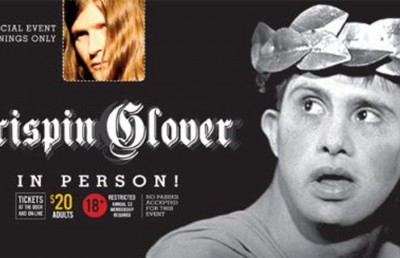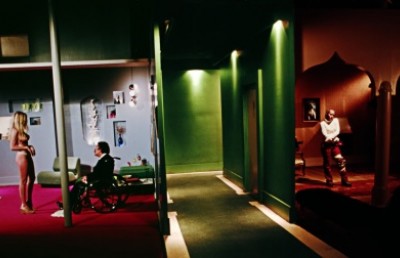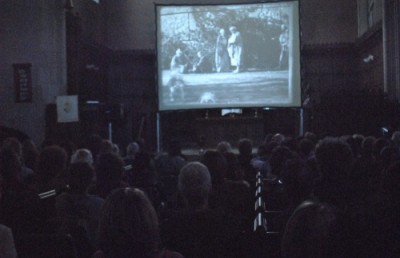Introducing Wild at Heart
Notes from the Montreal Film Society
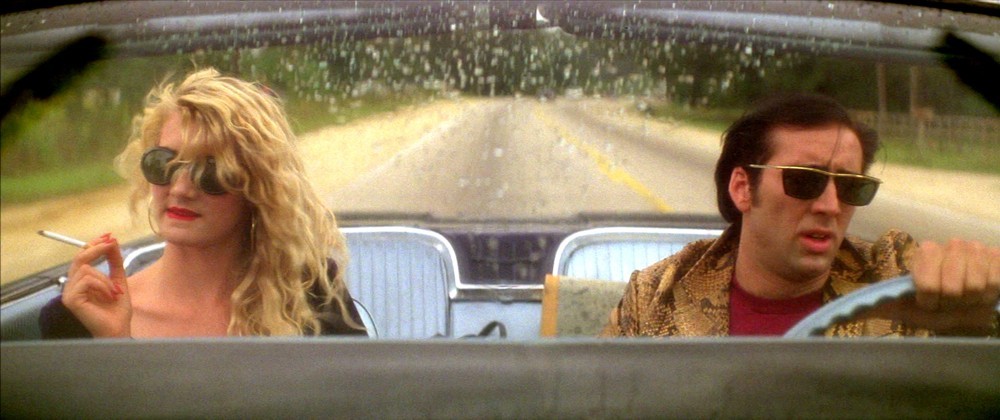
Last year on Valentine’s Day the Film Society of Montreal screened Concordia University’s 35mm print of Wild at Heart complete with Lynch-themed baked goods during the intermission. I wrote my MA thesis on Lynch a decade ago and have taught his work in several of my film classes at Concordia over the years, so Film Society director Philippe Spurell invited me to introduce the film. I was honoured to accept. What follows is a transcript of my brief talk, beginning a series of notes from the Film Society to be featured on Offscreen during the society’s 25th anniversary year. – RJ
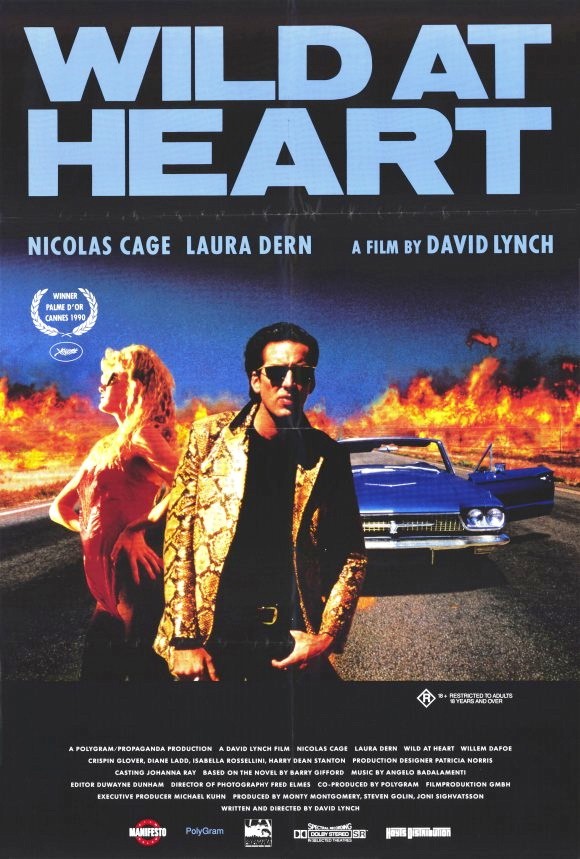
Wild at Heart was the film with which I became conscious of David Lynch as a director, and which had a major role in awakening me to the very idea of the director itself. Throughout my teenage years I had made movie choices based on things like genre, celebrity, or franchise. As a science fiction fan I had seen Dune many times, but did not think of it as an auteur film – or even know what that was. I enjoyed its grim absurdity and wanted more, but at that time the answer to where I could find more was to seek out other science fiction films. I was drawn to Wild at Heart initially because I was a Nicholas Cage fan, and on that front it didn’t disappoint; still one of my favourite of his performances after all these years. But at the ripe age of 18 or so, entering my first year of university, it was so clear that there was something else going on in this film, so different from any I had seen before, so passionate. It was this film, along with a few others from the early 90s, that I came to realize that to find more of what I liked about these films was to seek out more by the same directors. From here I began to look out for Lynch’s other films, diving full throttle into Twin Peaks while getting caught up on Lynch’s classics. A long obsession was sparked, and when Lost Highway dropped after Lynch’s long, depressed hiatus of 5 years my head nearly exploded. By then I was eyeballs deep into the formal study of film at the end of my BA, and the papers I wrote on Lynch got me into grad school, the impetus for my move to Montreal in 1999 where my only goal was to write a thesis on sound in the films of David Lynch. And in Montreal I stayed, first to do my PhD, then to teach, and I have included Lynch on many of my syllabi over the years. In a very real sense, Wild at Heart was an integral part of an awakening that led to the life I am living today, and it will forever hold a special place in my own heart even as my research and teaching interests have broadened to many other things.

Randolph Jordan (Photo: King-Wei Chu)
Lynch’s filmmaking career is notable for its wild ups and downs marked by periods of prolific creativity followed by long stretches away from the set. As a famously multi-disciplinary artist he’s always working on something. But for those of us who hang off of his films, the waits have been increasingly excruciating as they get ever longer, none more so than right now in year 10 of his longest hiatus to date as we await the return of Twin Peaks next year.
Wild at Heart sits at an interesting point in Lynch’s career, right in the midst of a notably prolific phase and the height of both commercial and critical success following a major low. By 1986 Lynch had already achieved the improbable: a cult sensation on the midnight circuit with his first feature Eraserhead. The next thing he knows he’s getting Oscar nominations for Elephant Man and then being put in charge of a major sci-fi blockbuster with Dune, one of the most expensive films made to that date. Dune’s box office failure played a large hand in bringing down the Dino DiLaurentis production company, but not before they threw him a bone worth a fraction of that budget to make his own project come to life, Blue Velvet, something of an artistic victory in the midst of the fallout. But when DiLaurentis finally crashed, it brought the new projects Lynch was working on down with it, tying his own script material up in rights issues that could not be readily resolved. Here he was left hanging for his first major lull, three years before the next projects would find their way to the screen.
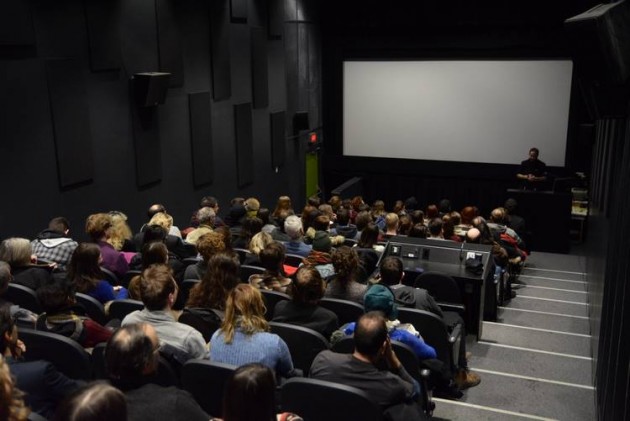
Sold-out crowd on Valentine’s Day. (Photo: King-Wei Chu)
Based on a novel by Barry Gifford, the idea to film Wild at Heart was brought to him by friend and producer Monty Montgomery who had bought the rights to Gifford’s books and was looking to have the latest produced as quickly as possible. Lynch saw Gifford’s book as a way to get working on a feature film again and with backing from Propaganda Films he jumped right in during the summer of 1989. And he liked Gifford’s work enough to call him back some years later to co-write the screenplay for Lost Highway.
Of course this was also the time of Twin Peaks, and the production and reception of Wild at Heart map onto the television series in interesting ways. Lynch had just finished the Twin Peaks pilot when the Wild at Heart idea came his way. As a condition of financing the film, Lynch had to put it into production right way. He developed the script and pre-production as the first episodes of the Twin Peaks series got underway, and after he directed episode two he left the series in the hands of others to go and shoot Wild at Heart, with some overlapping cast (notably Sheryl Lee, Sherilyn Fenn, and Grace Zabriskie). This is something that so many Twin Peaks fans don’t realize when they hold up the first season as the best of the series. Lynch had much less involvement here than in the second season in which he personally directed four episodes and appeared as an actor in several more. To me, episodes 8 through 16 are the best of the series, when Lynch’s presence on set was the heaviest after returning from his absence to shoot Wild at Heart. It poses something of a problem for an auteur-based appreciation of season one when these facts are taken into consideration. But I digress…
Twin Peaks launched to critical acclaim, gaining one of the biggest audience shares in television history. As the first season neared conclusion, Wild at Heart premiered at the Cannes film festival where it won the Palme D’Or from a jury headed by Bernardo Bertolucci. It was subsequently released in theatres shortly after the season finale of Twin Peaks left audiences with a juicy cliffhanger. This was one of Lynch’s most successful periods both commercially and critically, the only filmmaker in history to have a pop culture television hit while simultaneously winning the most coveted award on the international cinema circuit. And he would crash hard from these twin peaks as his TV show lost direction late in the second season and was finally cancelled, and the follow-up film Fire Walk With Me was received very poorly (despite being one of his personal favourites, and also one of my own), and plunged him into a depression that kept him from feature filmmaking for five years.
But Wild at Heart was not unanimously beloved. Even at Cannes the decision to award it the Palme D’Or was immediately challenged and official critical response was mixed. For many, this was the film that marked a dramatic shift in Lynch’s tone to something less sincere, a parody of his own Lynchian characteristics so well established in his most personal work, particularly Eraserhead and Blue Velvet. At the heart of many critiques is the fact that the film is much more reflexive than previous work, with continual overt references to The Wizard of Oz, Nicholas Cage doing a feature-length Elvis impersonation that some find disingenuous and which is certainly over the top, and a host of bits and pieces drawn from other films. Watch out in particular for a shot involving a dog and a severed human hand that echoes Akira Kurosawa’s Yojimbo. Of course many have noted that Lynch has been paying homage to his favourite influences since earliest days. Yet Wild at Heart admittedly calls more attention to the references than usual, and pairing these details with the fact that Lynch was working from someone else’s material on a tight schedule and it’s easy to argue that the film isn’t as personal a vision as some of the others.

Mixing at intermission. (Photo: King-Wei Chu)
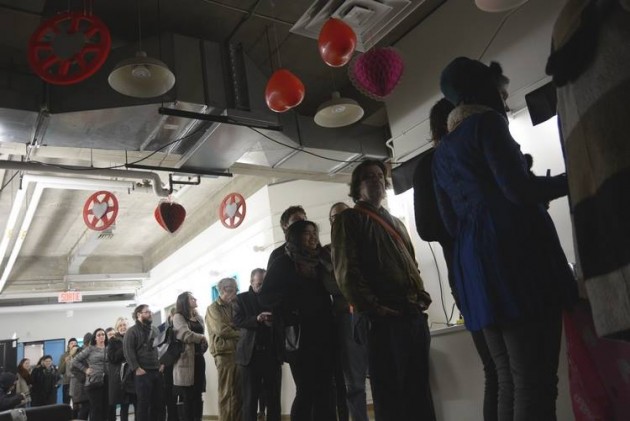
Lining up for the goodies. (Photo: King-Wei Chu)
However, I think it’s a mistake to write the film off on these terms. There is a passionate sincerity to the dynamic between Sailor and Lula, perfectly appropriate for Valentine’s Day of course, but also indicative of Lynch’s own passion for the material, and for filmmaking in general. Just as Sailor and Lula’s love persists despite crippling adversity, so too has Lynch. Easy to note in retrospect a quarter century later, but even at the time Lynch had already tasted the highest of highs and the lowest of lows, and Wild at Heart is the product of an unbridled enthusiasm to get back behind the camera and let the love fly hard and fast.
In the bigger picture, the film serves as a necessary bridge to Lynch’s later work. It’s a road movie that follows a couple’s attempt to escape the drudgery of Middle America to the golden shores of California with all its promise. After the dark days following the demise of Twin Peaks Lynch would set three of his last four films in Hollywood. Lost Highway indirectly addresses the perils of studio filmmaking through the figure of the camera-wielding Mystery Man invading a couple’s house in the Hollywood hills. And of course Mulholland Drive and Inland Empire are set right in the heart of the film industry itself. In this light, his preoccupation with making films about filmmaking, traceable through his penchant for homage from the beginning, can hardly be written off as self-parody. Rather, this reflexive tendency indicates serious reflection on the processes of filmmaking and their effects on the people involved within them. It seems no surprise at all that Lynch would take this route after his long roller coaster ride through success and failure. If these films are considered postmodern for the way they continually reference both themselves and the films around them, they are deeply insightful for being so. Wild at Heart was born out of the intense desire to create, frustrated by hang-ups borne of the industry that allows this creation to flourish. It lays the road of promise out ahead, and plunges us deep into the sidetracks and pitfalls that he, as a filmmaker, knew all too well. It shows us a troubled romance, but one that resists failure and persists wildly. Sailor and Lula never made it California, but Lynch’s later films step in to answer the question: What if Sailor and Lula had made it sunny California? Would the world be as golden as its postcards suggest? The answer, of course, is no.
The shining star of Wild at Heart, and arguably Lynch’s entire oeuvre, is Laura Dern, the only actor (for now) to have followed Lynch across the bridge from early to late career, from the small town America of Blue Velvet down that yellow brick road to the heart of the industrial beast that is Inland Empire [and as we now know a year later, back into the woods with her role in Twin Peaks for the new season]. Dern’s performance in Wild at Heart is excellent in its own right, made to endure so much more as both actor and character than Nicolas Cage. And from our vantage point of the present moment, it is stunning to see her move from the high school innocence of her first Lynch through the adult eager to discover the world on into the unsettling realities of middle-age in the last film. And this last film, like Wild at Heart and Lost Highway before it, is another product of a post-peak low period after Mulholland Drive single-handedly replicated the tumult of working with a network on a failed TV series and a resurrection at Cannes with his second Palme D’Or (shared that year with the Coens for The Man Who Wasn’t There). Lynch had had enough, and the radical experimentation of Inland Empire, aesthetically and on the levels of production and distribution, mark it as Lynch’s clearest vision of the nightmares that making films can yield. Dern was up to the task and renders the horror, uncertainly and instability of the art life as nobody else could have.
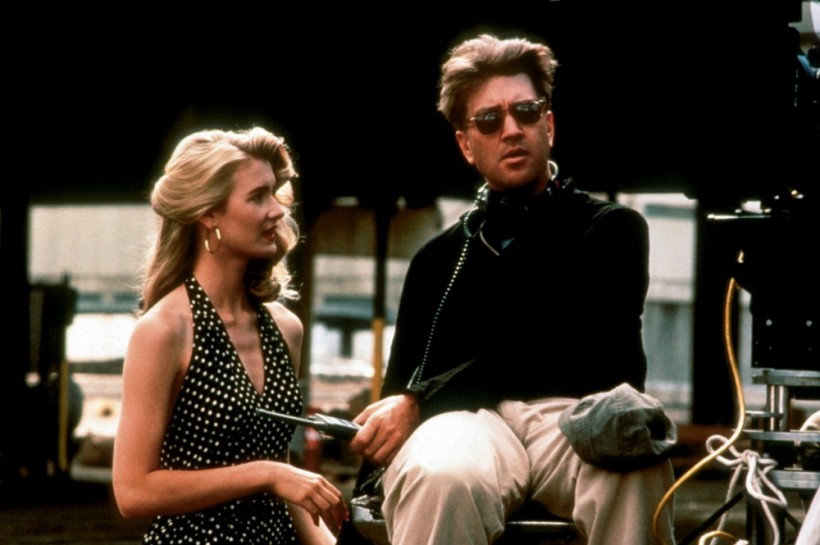
Laura Dern and David Lynch on the set of Wild at Heart.
In many ways, Wild at Heart is the beginning of Lynch’s most interesting phase of artistic reflection, and as such it is an essential piece in the Lynch puzzle. One can only wonder how Twin Peaks will look next year, upon its return to the kind of small town America that Sailor and Lula sought to escape, and which Lynch left behind almost entirely in his later work. Let’s hope it will be a glorious resolution to his longest hiatus from narrative filmmaking to date, now ten years in the making. We’ll find out in 2017. For now, let’s enjoy Wild at Heart in all of its 35mm glory. And Happy Valentine’s Day!
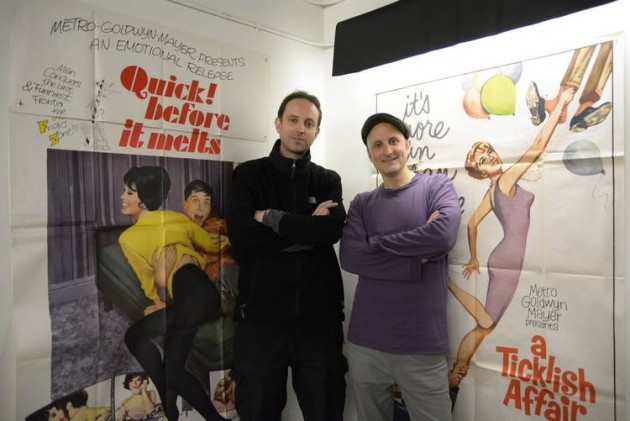
Randolph Jordan and Philippe Spurell. (Photo: King-Wei Chu)

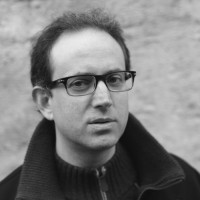

_400_258_90_s_c1.jpg)
